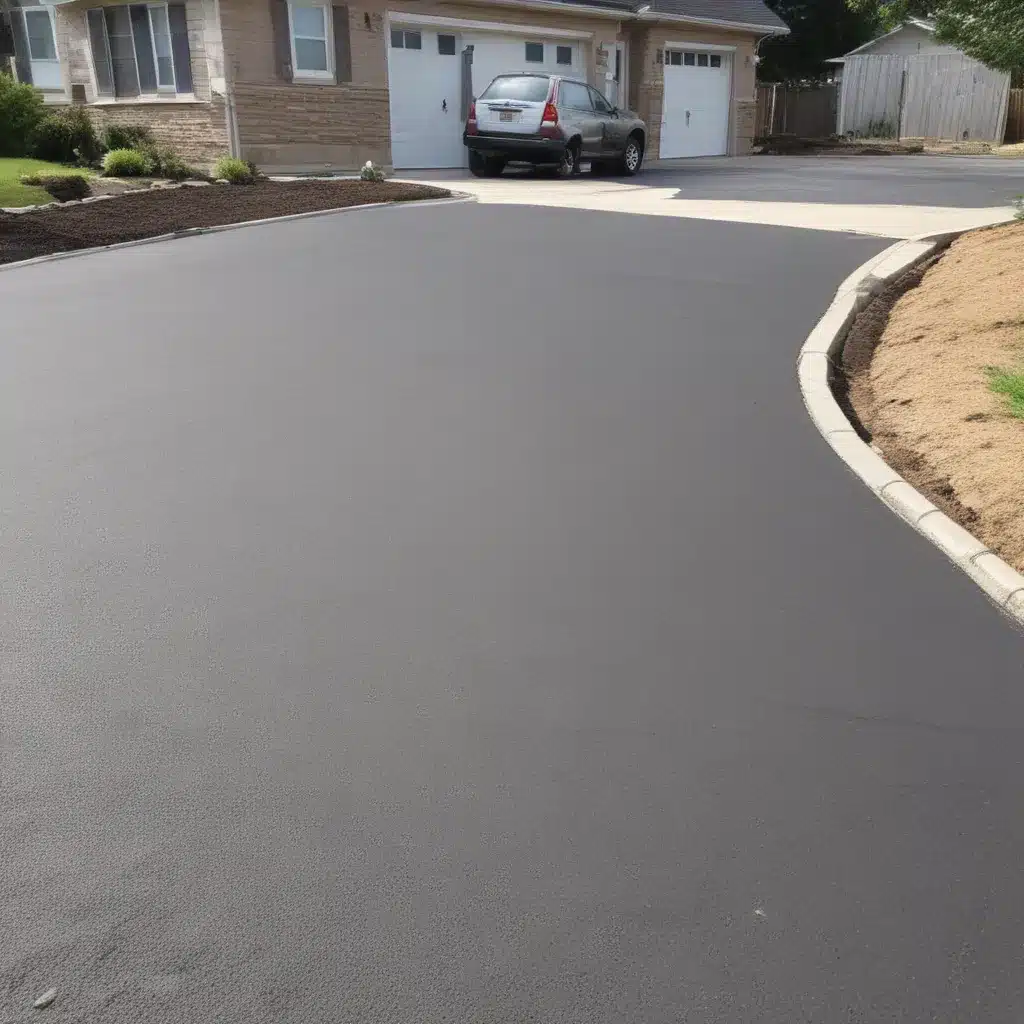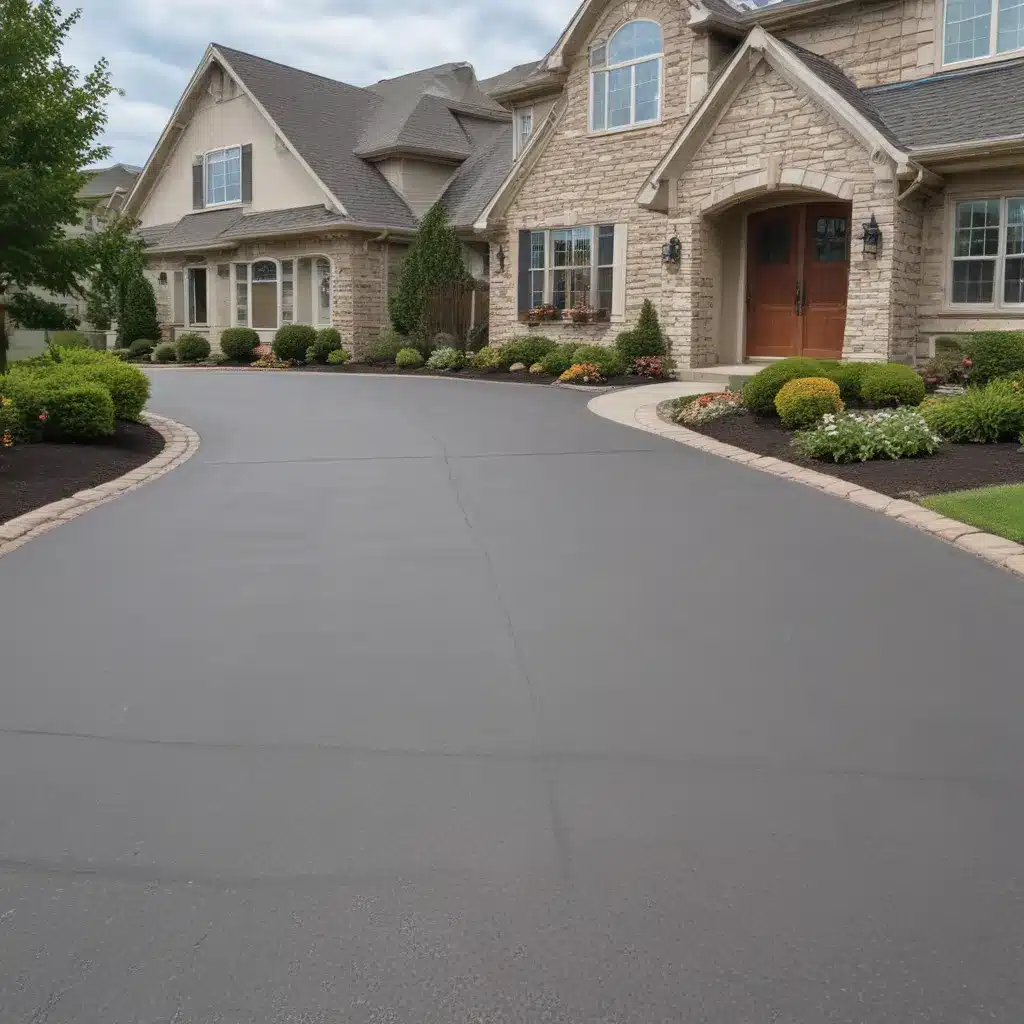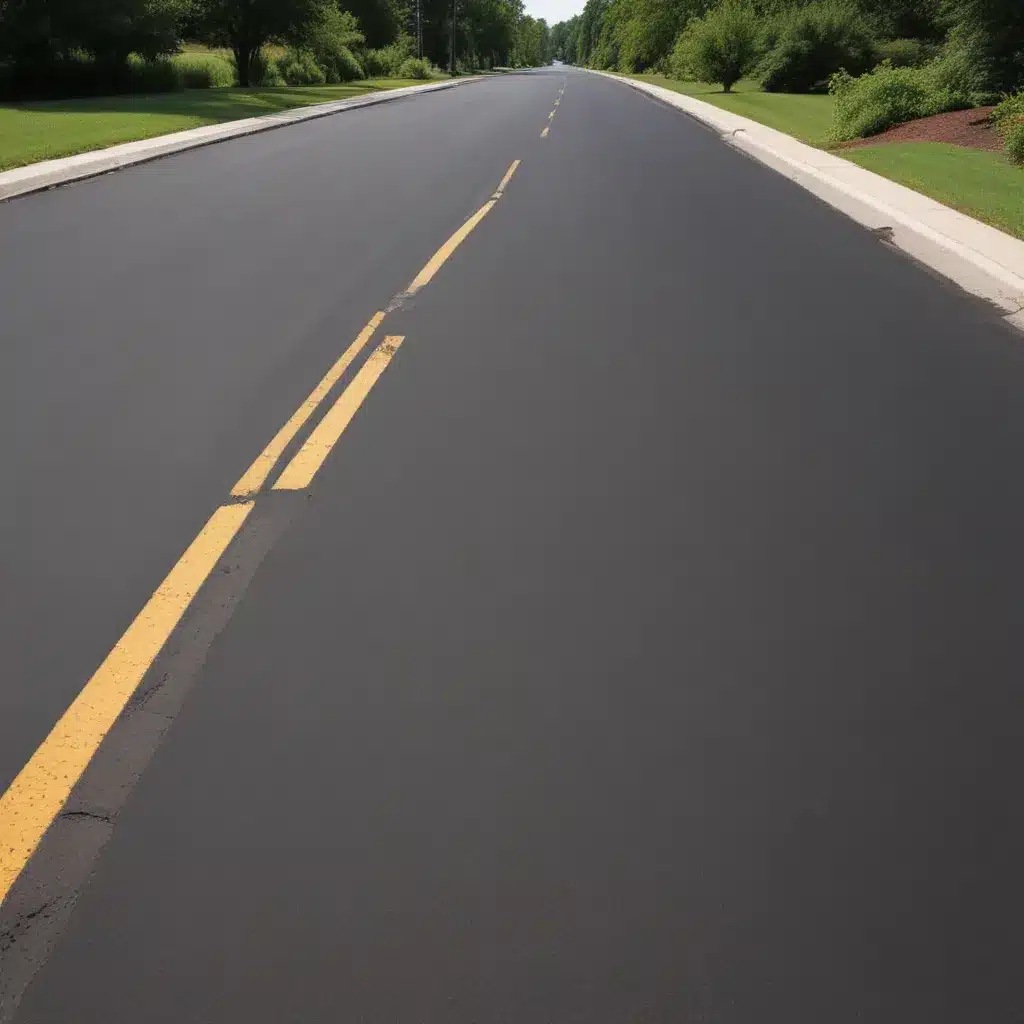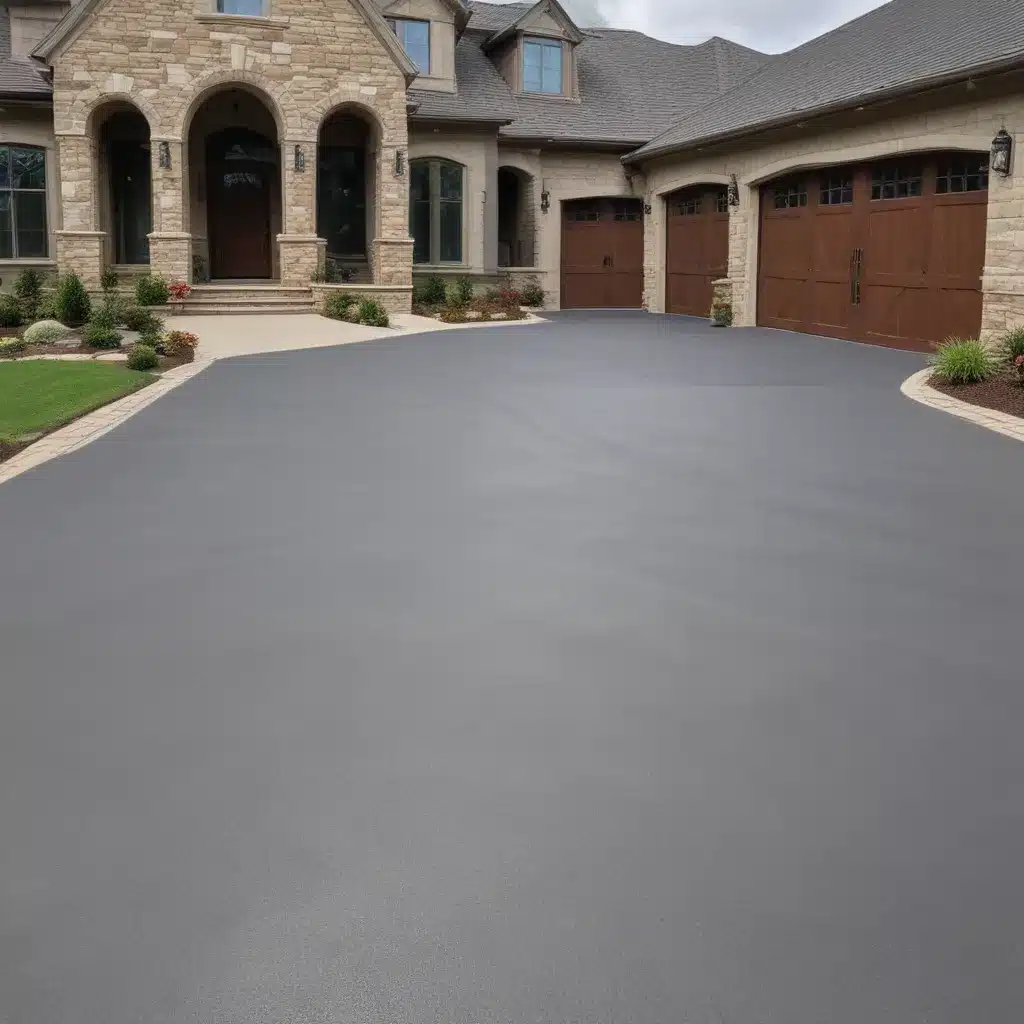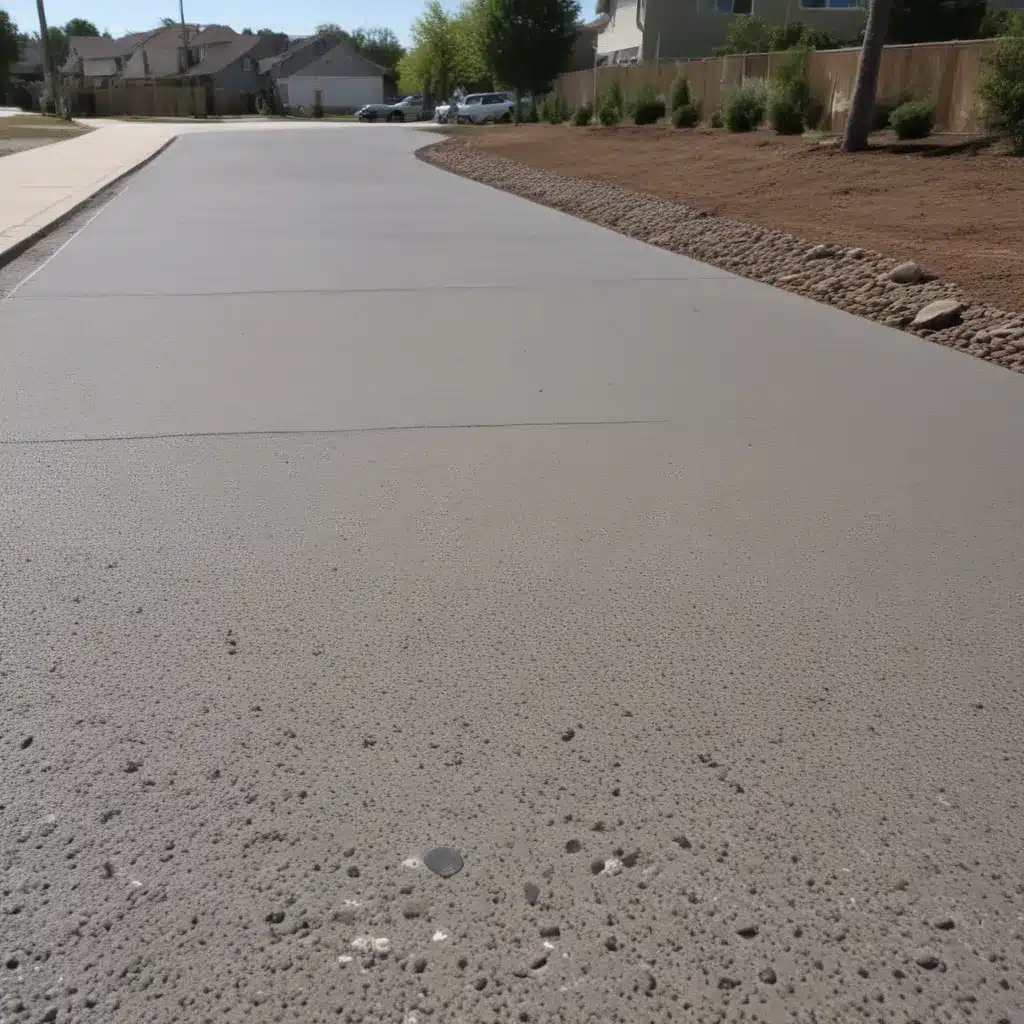Uncovering the Cracks: A Driveway Dilemma
As I pull into my driveway, the familiar sight of cracked, uneven pavement greets me like an old, grumpy neighbor. It’s been years since I’ve given this stretch of concrete any real attention, and now it’s starting to show its age. Weeds have taken up residence in the crevices, and the once-smooth surface has morphed into a bumpy obstacle course that threatens to swallow my tires whole. I can’t help but wonder, “How did we get here? And more importantly, how do I fix this driveway disaster before it’s too late?”
It’s a problem many homeowners face – the slow, steady decline of a once-pristine driveway. Whether it’s the result of harsh weather, heavy use, or simply the relentless march of time, a worn-out driveway can be a frustrating and unsightly issue. But fear not, my fellow driveway-dwelling friends, for I’ve done the research and am here to share my insights on how to breathe new life into that faded, cracked expanse of pavement.
Assessing the Damage: Identifying Common Driveway Woes
Before we can dive into the repair process, it’s important to understand the common culprits behind a driveway’s deterioration. After all, treating the symptom without addressing the root cause is like trying to patch a leaky roof without first finding the source of the problem.
One of the most prevalent issues I’ve encountered is cracking. This can be caused by a variety of factors, from the natural expansion and contraction of the pavement due to temperature changes, to underlying soil issues that create unstable foundations. Cracks not only look unsightly, but they can also lead to further damage if left unchecked.
Another common problem is the dreaded pothole. These crater-like depressions can form due to a combination of heavy use, poor drainage, and the gradual breakdown of the driveway’s surface. Potholes don’t just create an uneven driving experience – they can also pose a safety hazard, especially for those with two-wheeled modes of transportation.
And let’s not forget the scourge of vegetation growth. Weeds and even small trees can take advantage of the cracks and crevices in a driveway, slowly but surely pushing their way through the pavement. Not only does this make for an unsightly display, but it can also further exacerbate the underlying issues.
Tackling the Troubles: Preparing for Driveway Repair
Alright, now that we’ve identified the most common driveway woes, it’s time to roll up our sleeves and get to work. But before we grab the tools and start hammering away, there are a few important steps we need to take to ensure a successful and long-lasting repair.
First and foremost, it’s crucial to assess the extent of the damage. Take a close look at your driveway, noting the size and location of any cracks, potholes, or vegetation growth. This will help you determine the appropriate course of action and the necessary materials and equipment.
Next, it’s time to give that driveway a good old-fashioned cleaning. Use a broom or blower to sweep away any loose debris, and consider power washing the surface to remove any stubborn dirt or grime. This will not only help you get a better sense of the underlying issues, but it will also ensure that any repair materials you apply have a clean, stable surface to adhere to.
And let’s not forget about safety. When working on a driveway, it’s important to take the necessary precautions to protect yourself and others. This might include setting up cones or barriers to redirect traffic, wearing appropriate protective gear, and following all local regulations and guidelines.
Mending the Mess: Repairing Cracks, Potholes, and More
Now that we’ve laid the groundwork, it’s time to dive into the nitty-gritty of driveway repair. Depending on the extent of the damage, there are a few different approaches we can take.
For smaller cracks and potholes, a simple patching process may be all that’s needed. This typically involves cleaning out the affected area, applying a specialized crack or pothole filler, and then smoothing and sealing the repair. It’s a relatively straightforward task, but it’s important to follow the manufacturer’s instructions to ensure a long-lasting and seamless fix.
But what about those larger, more stubborn cracks and potholes? In these cases, a more comprehensive resurfacing or replacement may be necessary. This could involve removing a section of the driveway, addressing any underlying issues with the soil or foundation, and then laying down a new layer of pavement or concrete. It’s a more involved process, but it can help to restore the structural integrity and aesthetic appeal of your driveway.
And let’s not forget about that pesky vegetation growth. Tackling those weeds and small trees requires a bit of elbow grease and some strategic planning. Start by carefully removing any offending plants, making sure to get the roots as well. Then, consider applying a weed-barrier fabric or sealant to help prevent future growth.
Putting the Pieces Back Together: Completing the Driveway Renovation
With the repairs and resurfacing complete, it’s time to put the finishing touches on your driveway renovation. This is where the real magic happens, as you transform that old, worn-out expanse of pavement into a veritable work of art.
One of the most impactful ways to breathe new life into your driveway is through the strategic use of sealants and coatings. These products not only help to protect the surface from the elements, but they can also enhance the overall appearance by providing a fresh, uniform look. Think of it as the driveway equivalent of a fresh coat of paint – it can do wonders for the curb appeal of your home.
And let’s not forget about the importance of proper drainage. Ensuring that water can effectively flow away from your driveway is crucial for preventing future damage and extending the life of your repairs. This might involve installing or maintaining drainage systems, such as catch basins or French drains, to keep the pavement dry and stable.
Finally, don’t be afraid to get a little creative with your driveway design. While function is certainly the top priority, there’s no reason why you can’t also inject a bit of style and personality into the mix. Consider adding decorative borders, using contrasting pavement materials, or even incorporating sustainable landscaping elements to create a truly one-of-a-kind driveway masterpiece.
Embracing the Transformation: Enjoying Your Renewed Driveway
As I stand back and admire the freshly repaired and resurfaced driveway, I can’t help but feel a sense of pride and accomplishment. Gone are the cracks, potholes, and unsightly weeds – in their place, a sleek, smooth expanse of pavement that looks good enough to host a red-carpet movie premiere.
But the true reward isn’t just in the aesthetic transformation; it’s in the peace of mind that comes with knowing your driveway is once again sturdy, safe, and built to last. No more worrying about potential tire damage or tripping hazards, no more fretting over the ever-encroaching tide of vegetation. It’s a driveway reborn, a testament to the power of a little elbow grease and some strategic planning.
And let’s not forget the practical benefits, too. A well-maintained driveway can not only improve the curb appeal of your home, but it can also increase its overall value. Potential buyers will take notice of the care and attention you’ve put into this often-overlooked feature, and that can translate into a higher selling price down the line.
So, my friends, if you find yourself staring down the barrel of a driveway dilemma, take heart. With the right tools, the right plan, and a healthy dose of determination, you too can transform your cracked, worn-out pavement into a shining example of driveway excellence. Who knows – you might even find yourself reveling in the glory of your handiwork, just like I am.
Now, if you’ll excuse me, I think it’s time to grab a lawn chair and enjoy the view. After all, a freshly paved driveway deserves a proper celebration.

